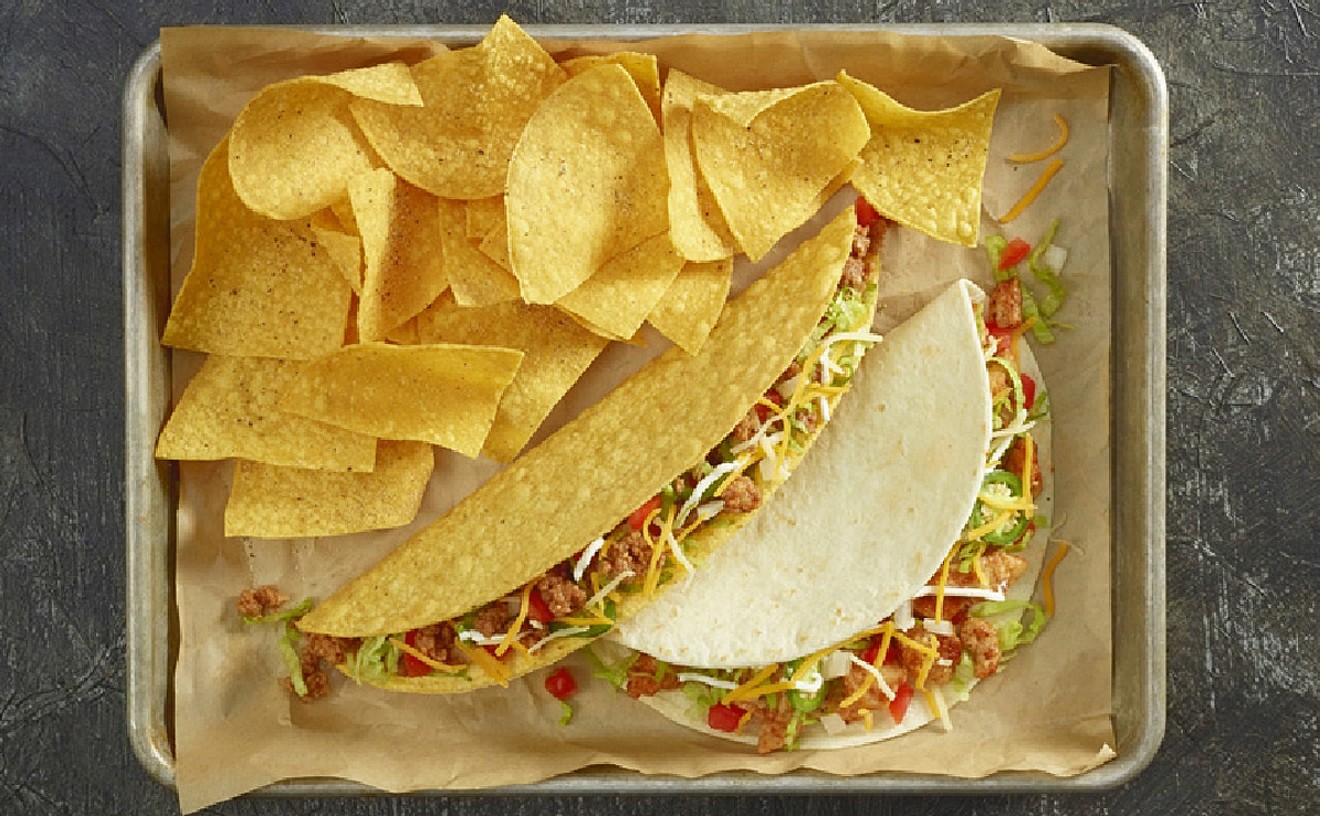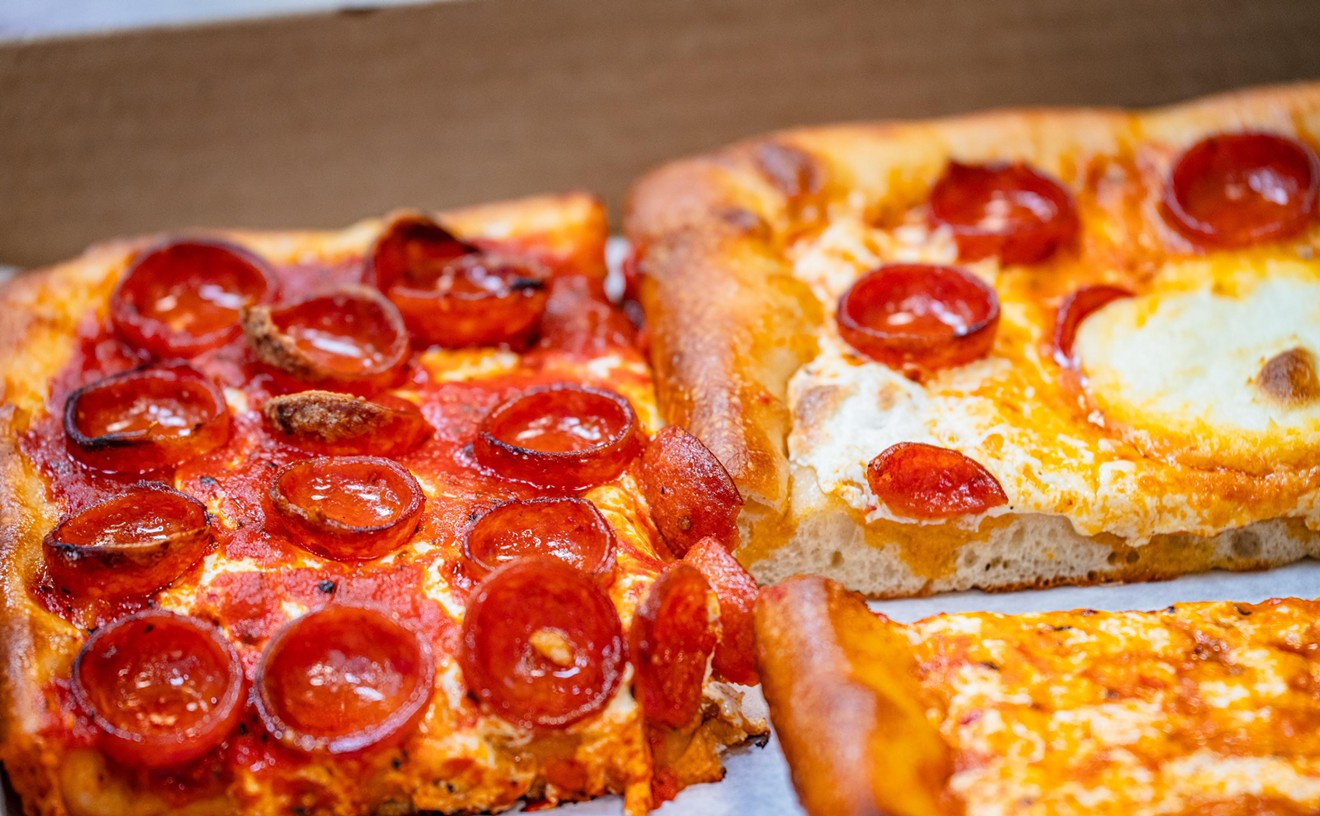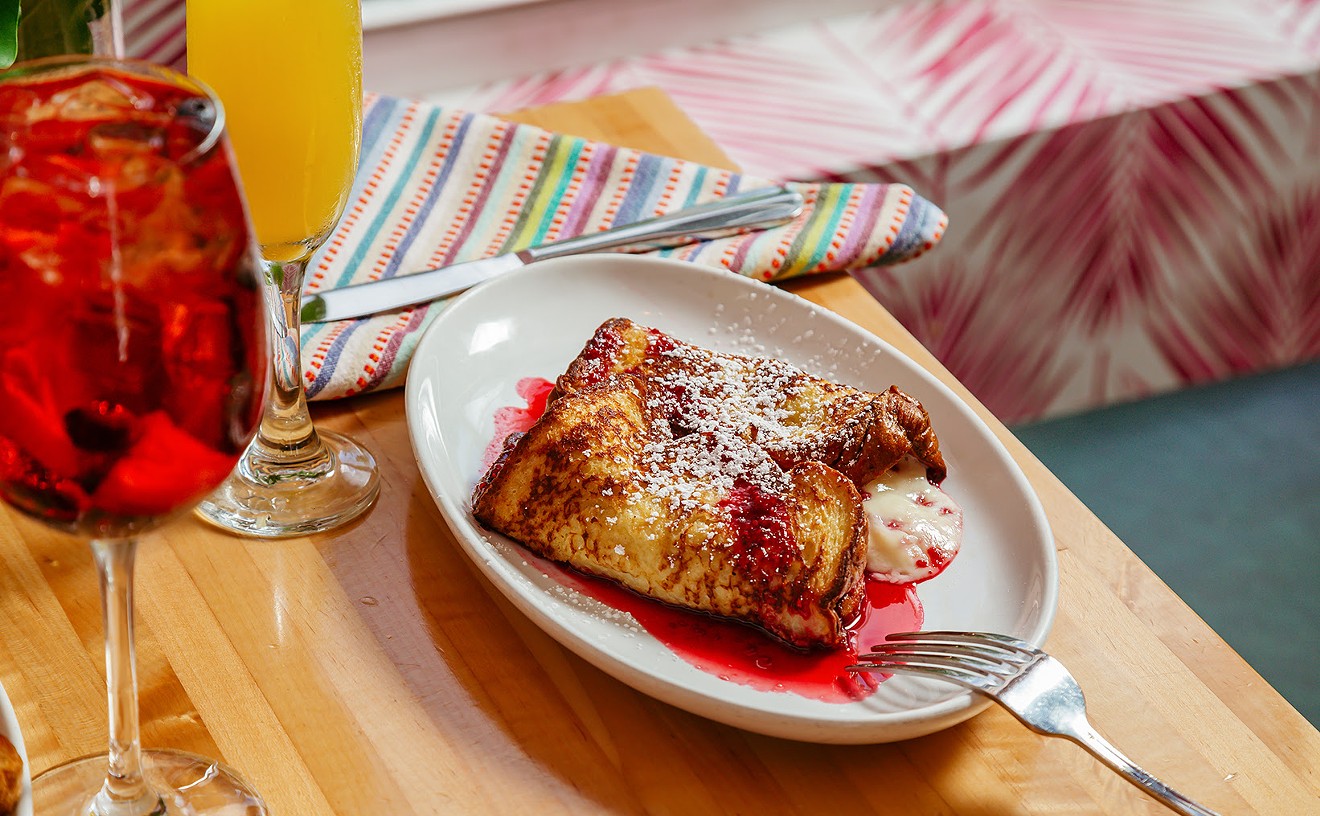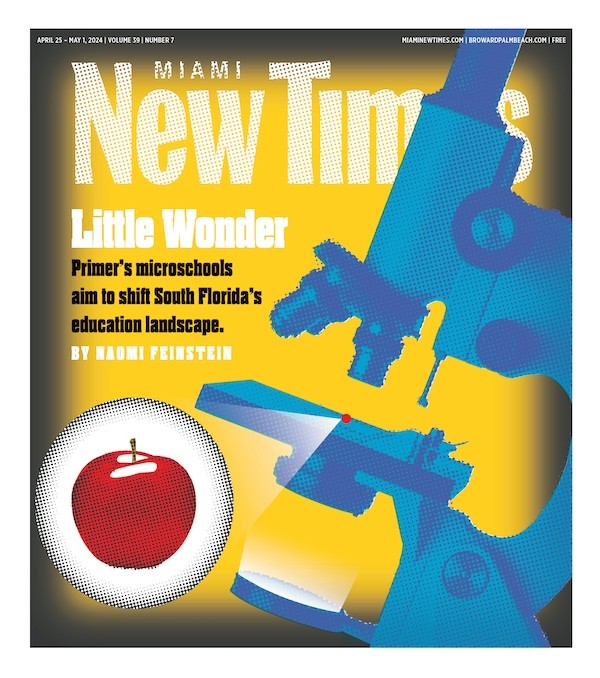By the 1930s and 1940s, dozens of manufacturers were producing gleaming stainless-steel Art Deco diners; more than 6700 of them fed one million Americans each day. The arrival of fast-food chains in the 1960s and 1970s brought a swift end to the golden age of the diner, but in recent years there has been a nostalgia-fueled renaissance of sorts. This renewed appreciation for what food writer John Mariani calls "the lost era of glamour and populist elegance" propelled Ray Schnitzer and Jerry Iwasiutyn in 1992 to disassemble a 1948 Paramount dining car and move it from Wilkes-Barre, Pennsylvania, to Washington Avenue, smack dab (and fittingly) in the heart of South Beach's Art Deco District. The classic 11th Street Diner boasts a long counter that seats sixteen, red-and-white booths, funky Formica tabletops, and an old Coca-Cola clock that hangs over the swinging doors that lead into the kitchen. It also features a full bar (located in an adjoining room with six dining booths and a jukebox), outdoor seating for a few dozen, and 24-hour food service. The clientele changes according to the hour: Late nights produce the most ebullient crowds, weekend brunches the most reserved. Generally speaking, customers here run the gamut from street to elite.
The large menu winks at modern diets and tastes, offering a veggie burger, Evian water, and an omelet of six egg whites and three fillings called the "body builder's special." It also strays into questionable territory: I got nervous just thinking about what a short-order cook might concoct in the name of "oriental specialties." Most of the food selections, though, are tried and true diner favorites that the kitchen prepares surprisingly well.
For starters, eight Buffalo wings ($4.50) arrived steamy, spicy, and moist, accompanied by the obligatory blue cheese dressing; the same number of "fresh made" onion rings ($4.25) were served hot, crisp, and greaseless. The chicken vegetable soup ($2.95) was good, too -- tasty chicken broth melded with the flavors of onions, celery, carrots, peas, and corn.
Entrees were also cranked out skillfully: Southern fried chicken ($7.95) -- a breast with wing attached, drumstick, and thigh -- was crisp, well-seasoned, and juicy; an open-face turkey sandwich ($6.95), all white meat, was bathed in soothing light-brown gravy; Sunday's blue plate special, pot roast ($8.95), was so soft as to break into meaty flakes at the touch of a fork. Even the hamburger ($4.50), a typical frozen patty, had a gratifying grilled flavor. It was served on a soft bun, cooked medium-rare as ordered. This may not sound overly impressive, but my experience leads me to conclude that three out of four restaurant burgers are cooked to a level of doneness other than that requested. As the cabbie said to the passenger who asked how to get to the Culinary Hall of Fame: basics, basics, basics.
Among the main courses, the lone loser was meat loaf: dark, dense, disturbingly salty, and hardly helped by a potent deep-brown gravy. All dinners came with a choice of two sides, so if you opt for the mashed potatoes, you may want to request the "lighter" gravy (the one that graces the turkey); it's smoother and less cloying. The potatoes do cry out for some sort of saucing: They're the rustic type, with skins mashed in and without much in the way of butter or cream. Other sides include home fries (taste great in the morning, old at dinnertime), French fries, a vegetable of the day, and cole slaw (the sweet and vinegary variety that is best enjoyed when eaten from one of those thimble-size paper cups).
Cakes and pies are not made on the premises, but they're nonetheless satisfying, particularly the rich chocolate cake ($3.95). The brownie hot fudge sundae ($3.95) is also a treat, though a gooey one. Prices at the 11th Street Diner are very reasonable, if inconsistent. Meat loaf dinner with mashed potatoes and gravy, green beans, bread and butter: $7.25. Iced cappuccino and carrot cake: $7.20.
The owners (Iwasiutyn sold his share of the business) have spent a considerable amount of energy and money re-creating the ambiance of a bygone era, but the disco music that blasts from the radio speakers behind the counter all but boot that mood from the room. As for the service, it can be wildly uneven: sometimes poor, other times excellent.
Take away the boxcar-shape exterior, the decorative Deco touches, and the round-the-clock hours of operation, and the diner becomes a coffee shop or luncheonette. Smitty's Restaurant, located on Second Avenue in the Miami Design District since 1941, was purchased by Theodore Tampouris in 1994. It's an old-time family restaurant, not a streamlined dining car, and it serves only breakfast and lunch. It has a horseshoe-shape counter with 22 spinning stools, beefy people crammed into booths, booths, and more booths that seat up to 135, steaming cups of coffee, and a modestly priced menu that includes meat loaf, mashed potatoes, and patty melts: what's come to be known as "comfort food," but what Smitty's menu calls "home-style cookin' at its best."
Indeed, Smitty's excels at home-style meals. Instead of blue plates, it offers chalkboard specials: country-fried steak ($5.95), roast turkey ($6.75), liver and onions ($5.45), and beef stew ($5.45). The last two are especially praiseworthy: The stew, served atop buttery rice, was chock full of tender meat, potatoes, and vegetables; the delicious and luxurious slab of slightly pink liver was lavishly covered with caramelized onions. Prices are uniformly low, which made me curious as to how impressive a T-bone steak Smitty's could serve for $7.65 (baked potato and vegetable included). Alas, though still listed on the menu, the T-bone is no longer available.
Smitty's other strong suit is its welcoming atmosphere. The two-tone coral-color walls resound with echoes of congenial chatter from a mostly blue-collar crowd. Tattoos spotted here are more likely to showcase the word Mom than the Zen symbols commonly inked on 11th Street's trendier South Beach patrons. Waitresses here also jibe with the diner stereotype, not only in appearance, but also in friendliness and efficiency. Service is terrific.
Sandwiches are less successful. The grilled cheese with bacon and tomato ($2.99), a routine but immensely satisfying combo of oozing American cheese and nicely griddled "famous thick bread" (fat slices of white), was the best one I tried. Chicken salad ($4.45) on "homemade country bread" (a store-bought sub roll) was mushy and mundane. The half-pound burger ($3.65), touted as "the best in Miami," was overcooked, and although some people may prefer their hamburgers griddled (the method of preparation here), I like mine grilled.
Two of the three desserts I sampled were letdowns: Cheesecake ($2.50) comes with a strawberry topping of coagulated cornstarch consistency, and a similarly gummy texture mars the key lime pie ($2.50). The rice pudding ($2.00), made at Smitty's, is a creamy, dreamy delight.
It's a pity that Smitty's does not serve beer or wine or malts or shakes or, for that matter, pink lemonade. Except for coffee and iced tea, all beverages come in a can. Conversely, the 11th Street Diner offers soda fountain specialties such as milkshakes, egg creams, and a very good malted. The best malteds I ever experienced were at Ruby's Luncheonette in Brooklyn, back when I was a child (some time ago). The owner, Ruby Arkin, once pulled me aside and told me his secret: He not only used real ice cream, he also kept his container of milk in the freezer until it took on a slushy consistency. "Makes it thicker, kid," Ruby whispered.
Then again maybe Ruby's malteds weren't the best. The greasy spoons of reality are so easily wiped clean by nostalgia for an idealized past. Many people, for instance, like to claim that diners serve "honest" food. As a certain president might say, it depends on what you mean by "honest." If you define it as straightforward, as in ordering a B.L.T. and receiving a bacon, lettuce, and tomato sandwich with no surprises, then yes, most diners serve honest food. Yet it can also be said that fresh produce has an inherent integrity that is not found in the mostly canned or frozen vegetables served at diners, including Smitty's and 11th Street. And if canned food is a misdemeanor against honesty, the instant potato flakes that Smitty's uses for its mashed potatoes constitutes a felony. Of course, I don't look for honesty, or fine dining, from diners. Just prompt service, fair prices, and food good enough that, even if eaten regularly, won't lead a person to the same fate as Pop Tierney. The 11th Street Diner and Smitty's Restaurant more than exceed these modest expectations.
The 11th Street Diner
1065 Washington Ave, Miami Beach; 305-534-6373. Breakfast, lunch, and dinner daily, 24 hours a day.
Smitty's Restaurant
3195 NE 2nd Ave; 305-573-3162. Breakfast and lunch Monday to Friday from 6:00 a.m. till 3:00 p.m., Saturday from 7:00 a.m. till 2:00 p.m.










